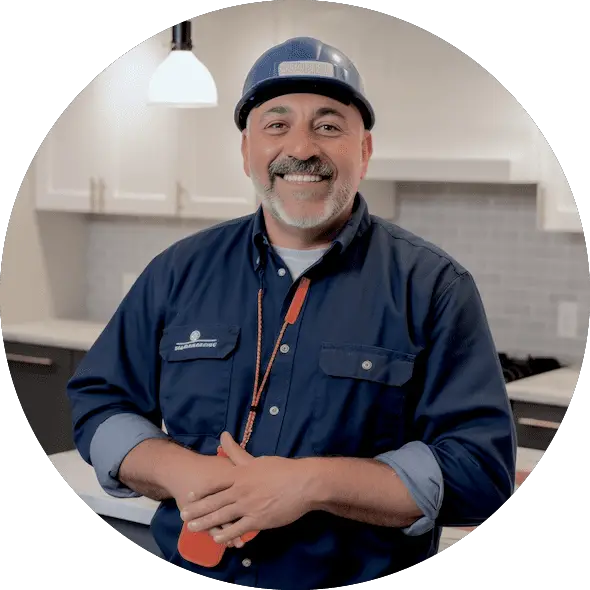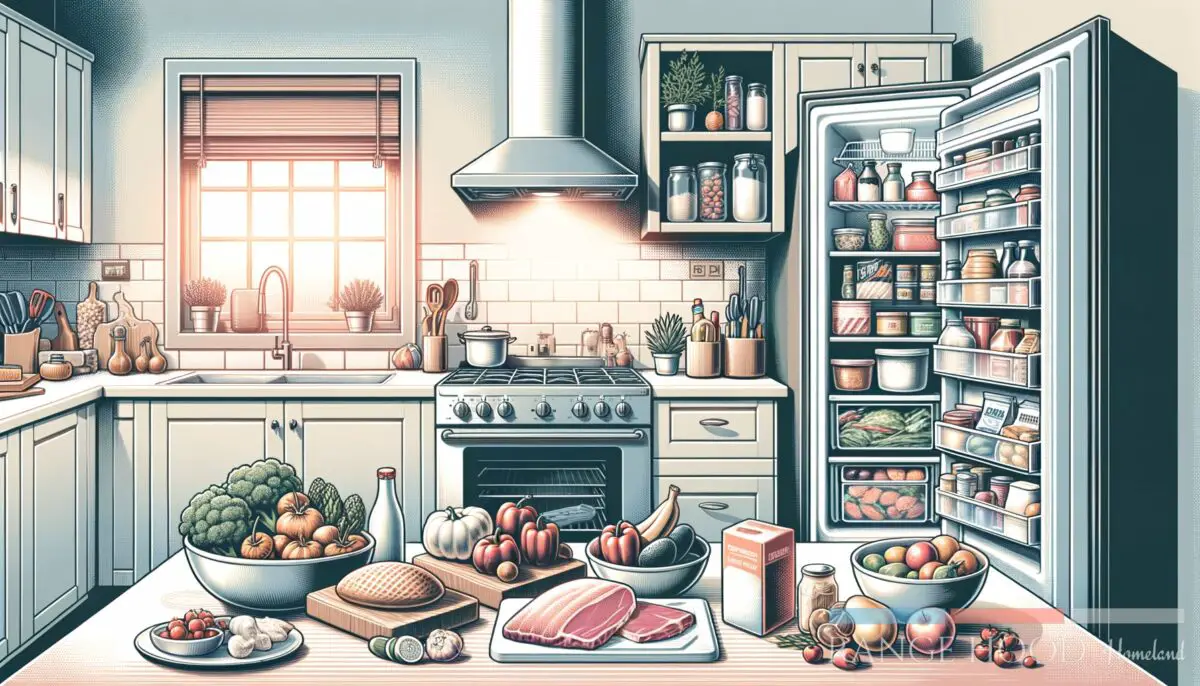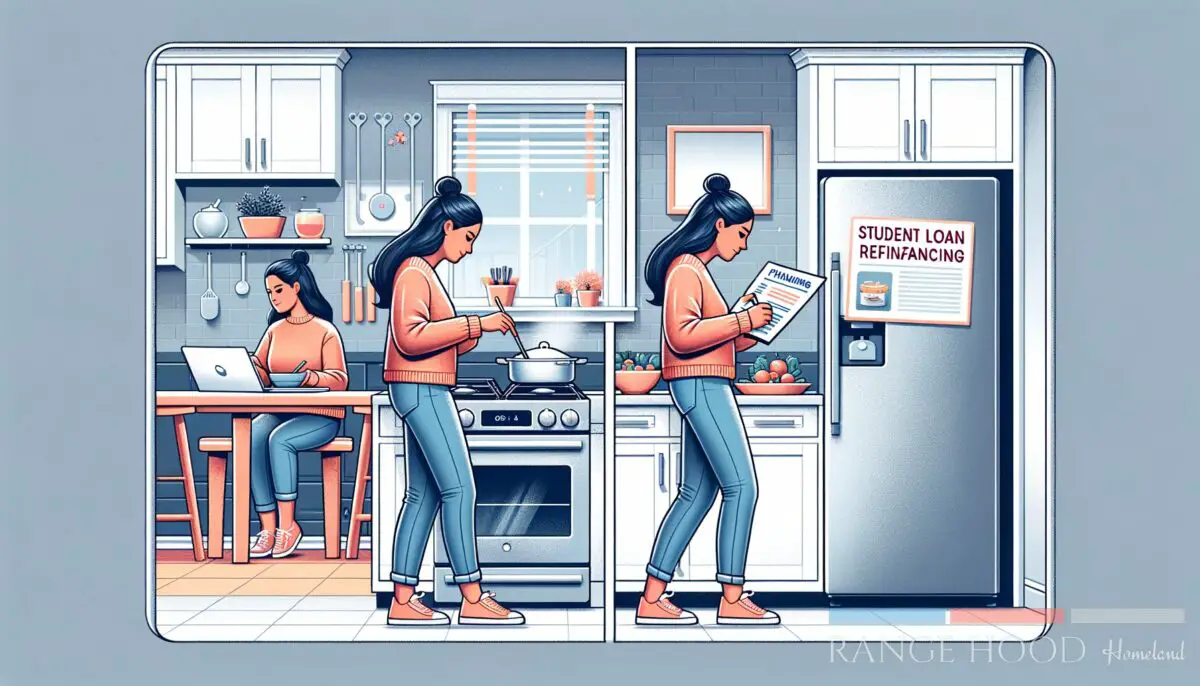Hopping into the kitchen renovation space feels like stepping into a high-stakes cook-off — everyone’s got an opinion on the best way to retrofit a range hood in your existing setup. Whether you’re wandering through online forums or hashing it out at the home improvement store, the air’s always buzzing with debate.
Before diving in, it might help to brush up on your basics with this savvy guide to the ultimate range hoods. In this post, you’ll learn how to seamlessly integrate a range hood, creating a functional and stylish kitchen heart.
If you are a visual learner, check out this video titled ‘How to install kitchen ductless range hood under the cabinet – easy way!’
Key takeaways
- Choose the right range hood that fits your kitchen’s needs and style.
- Prepare the area and plan for any ductwork or electrical changes.
- Ensure proper installation, considering both functionality and aesthetics.
- Consider more tips and dos and don’ts for a smoother process.
How to retrofit a range hood in an existing kitchen
When it comes to kitchen renovations, installing a new range hood in an existing kitchen is both an aesthetic upgrade and a functional necessity. It enhances your kitchen’s design while improving air quality by venting out smoke, heat, and cooking odors.
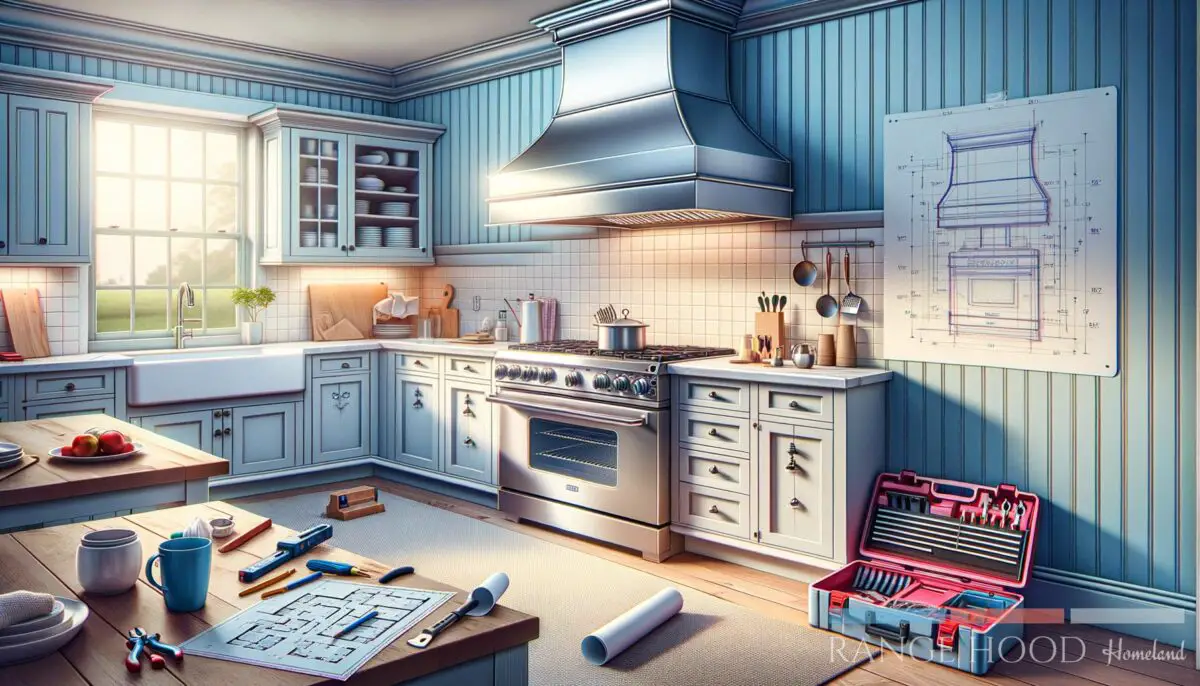
Here, we’ll walk through the steps to retrofit a range hood in your kitchen, ensuring you can tackle the project with confidence and create a more inviting and efficient cooking space.
Step 1: Choose the right range hood
Before you get your toolbox out, selecting the suitable range hood is crucial. Consider the size, style, and whether you need a ducted or ductless model based on your kitchen’s layout and ventilation options.
Take a moment to review different types, like under-cabinet hoods or wall-mounted options, to find what best suits your space.
Step 2: Prepare the area
Clear the workspace and make sure you have access to the range hood’s future location. If you’re replacing an old hood, remove it along with any existing ductwork if necessary.
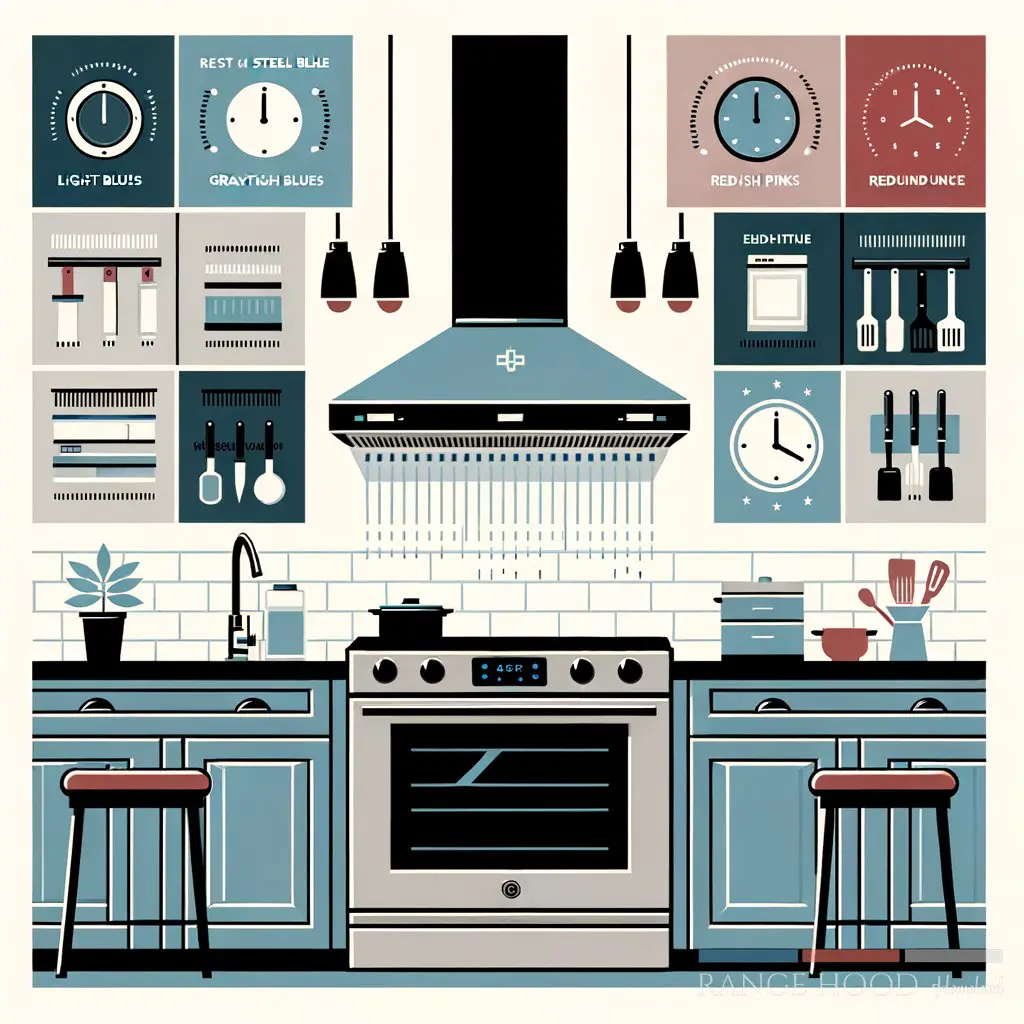
For new installations, mark the area where the hood will go, ensuring there’s enough clearance between the stove and the hood as recommended by the manufacturer.
Step 3: Check for wiring and ductwork
For ducted hoods, plan the route for the ductwork from the hood to the outside, trying to keep the path as short and straight as possible. For electrical connections, ensure there’s an appropriate power source nearby.
If not, you may need to install new wiring safely to power the hood.
Step 4: Install the ductwork
If you’re tackling a ducted model, now’s the time to install or adjust ductwork. Cut a hole for the vent in the wall or ceiling as needed, attaching the duct securely and sealing all joints with duct tape or a sealant to prevent leaks.
Remember, efficient ductwork is key to effective ventilation.
Step 5: Mount the range hood
Follow the manufacturer’s instructions to mount the range hood. This usually involves securing it to the wall or cabinets with screws.
It’s critical to ensure the hood is level and firmly supported to handle its weight and the vibration from the fan.
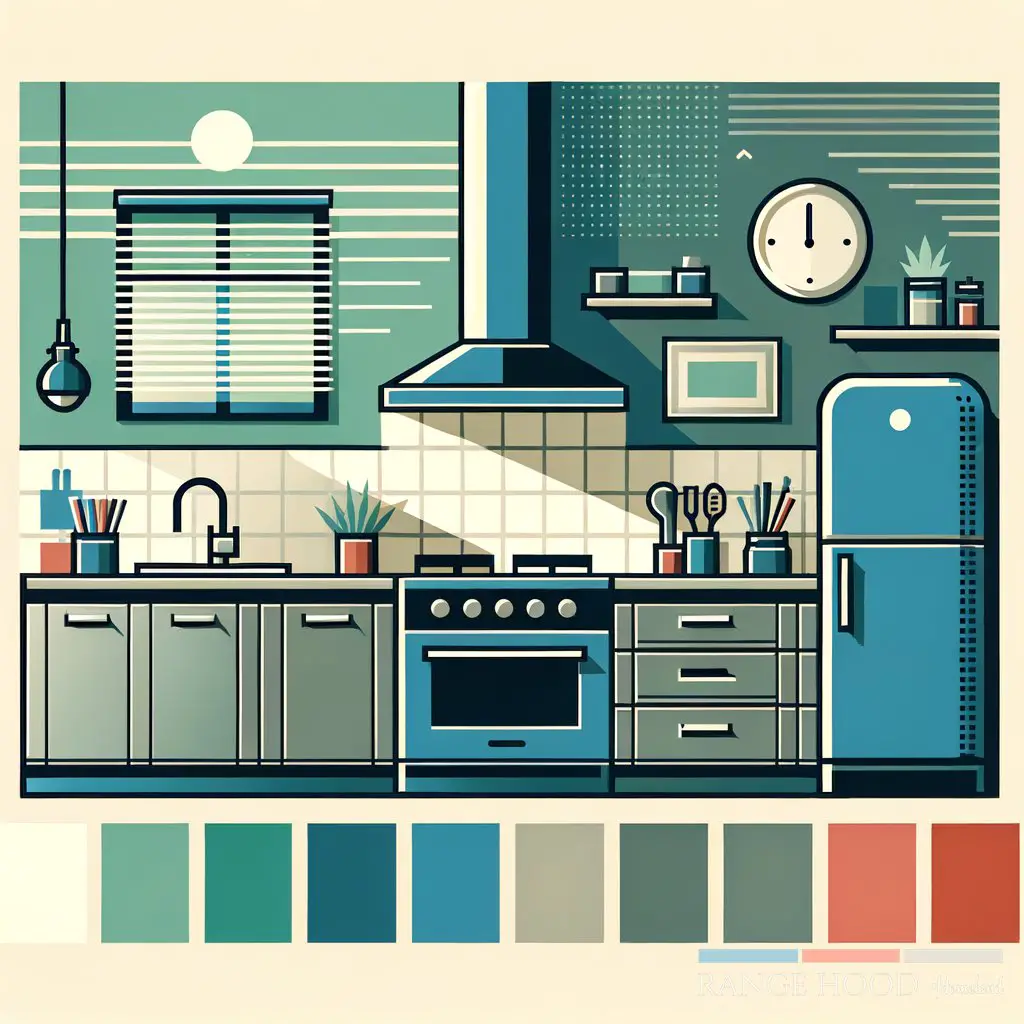
Step 6: Connect electrical wiring
Carefully connect the range hood to the power source according to the manufacturer’s guidelines. For most installations, this involves wiring the hood’s power cord to a dedicated circuit.
If you’re not comfortable with electrical work, it might be wise to call in a professional.
Step 7: Finalize ductwork and test
For ducted installations, attach the range hood to the ductwork. Make sure all connections are tight and sealed well.
Switch on the range hood to test if it’s correctly venting air outside. For ductless models, install the charcoal filter as instructed.
Lastly, switch on the range hood to ensure everything is functioning as expected, making any necessary adjustments.
By following these steps, you can successfully retrofit a range hood in your kitchen, enhancing its functionality and overall appeal. With a bit of planning and effort, your kitchen will not only look better but also offer a more comfortable cooking environment.
COSMO COS-63190S Wall Mount Range Hood

COSMO COS-63190S Wall Mount Range Hood
More retrofit a range hood tips
Retrofitting a range hood can significantly improve your kitchen’s air quality and appearance, but it requires careful planning and execution. Here are a few extra tips to ensure the process goes smoothly and you get the best possible results from your new range hood.
- Always measure your space multiple times to ensure the new hood will fit perfectly.
- Invest in a high-quality range hood that matches your kitchen’s cooking demands and style.
- Consider the lighting options on range hoods to enhance visibility and ambiance in your kitchen.
- Think about the noise level of the range hood; quieter models can make a big difference in open kitchens.
- Look into range hoods with smart features for added convenience and efficiency.
When it comes to the dos and don’ts of this process:
| Do | Don’t |
|---|---|
| Double-check all measurements before purchasing | Rush the installation without reading the manufacturer’s instructions |
| Ensure proper ventilation for ducted models | Neglect local building codes and regulations |
| Consider professional installation for electrical or complex setups | Forget to test the range hood’s operation before completing the installation |
| Plan for future maintenance access | Underestimate the importance of proper lighting |
A mindful approach to choosing and installing a range hood can save you a lot of hassle.
Advantages and disadvantages of retrofitting a range hood
Installing a new range hood in an existing kitchen setup holds many benefits, not only improving your cooking environment but also potentially increasing your home’s value. However, like any renovation project, it comes with its own set of challenges.
Advantages
- Improved air quality by venting out smoke, odors, and pollutants.
- Enhanced kitchen aesthetics give your cooking space a modern look.
- Increased property value with a well-executed kitchen update.
- Better lighting over the cooking area for improved visibility.
- Noise reduction with modern, quieter models compared to older range hoods.
Disadvantages
- Installation challenges including fitting the new hood in the existing space or modifying cabinetry.
- Cost can be significant, especially for high-end models or if new ductwork is required.
- Complexity in installation, particularly with ducted systems that may require professional help.
- Maintenance of filters and cleaning to ensure optimal operation.
- Potential for unforeseen complications like discovering outdated wiring or needing more structural support.
Retrofitting a range hood can be a highly beneficial project but requires careful consideration of the pros and cons to ensure it’s the right move for your kitchen renovation.
“Investing in a high-quality range hood that matches your kitchen’s cooking demands and style not only enhances the atmosphere but profoundly impacts your cooking experience. By considering elements like noise levels and smart features, the functionality of your kitchen can be significantly elevated, making every meal a smoother, more enjoyable process.”
Opinion
As someone who’s not an expert in kitchen renovations, retrofitting a range hood seems like a project that could bring a sense of renewal and efficiency to an old kitchen. From what I’ve learned, it feels like the kind of upgrade that offers both aesthetic appeal and practical benefits, such as improved air quality and cooking conditions.
Also, the idea of having a quieter kitchen environment and the potential to increase my home’s value certainly adds to the appeal. For anyone considering this, taking the time to research and plan, perhaps starting with some inspirational ideas on how to integrate a range hood into your kitchen design by checking this insightful article, seems like a solid first step.
While it’s clear that there are multiple advantages, I’m particularly cautious about the potential complexities and costs associated with retrofitting a range hood. It’s not just about buying the unit, but also about ensuring proper installation and compliance with local regulations.
The considerations around ductwork and electrical connections might warrant seeking professional help, which could add to the overall expense. Yet, the promise of a fresher, cleaner kitchen environment and the long-term benefits of installing a range hood seem to outweigh the initial investment and effort.
Frequently asked questions (FAQ)
What if my kitchen doesn’t have existing ductwork?
If your kitchen lacks existing ductwork, you might consider a ductless range hood. These models filter air and recirculate it back into the kitchen.
Though not as effective as ducted models at removing heat and humidity, they’re a viable option for kitchens where installing ductwork isn’t feasible.
Can I install a range hood without professional help?
While DIY installations are possible, especially for simpler models, it’s crucial to assess your comfort level with electrical work and structural modifications. For more complex installations or any setup requiring new ductwork or electrical lines, it’s wise to consult or hire a professional.
This ensures safety and compliance with local codes.
How usually should I replace the filters in my range hood?
The frequency of replacing or cleaning your range hood filters depends on the model and how usually you cook. For ductless models with charcoal filters, replacement every three to six months is common.
However, metal filters in both ducted and ductless units can usually be cleaned and reused; check your manufacturer’s guidelines for specific recommendations.
Final thoughts
In wrapping up, retrofitting a range hood in your existing kitchen isn’t just about upgrading your cooking space—it’s about enhancing your quality of life. The right range hood not only elevates the style of your kitchen but also significantly improves the air quality, making your kitchen a healthier and more enjoyable place to spend time in.
With the steps and tips provided, you’re now better equipped to tackle this project, whether you plan to DIY or hire a professional.
What’s your experience with installing a range hood?Did I cover everything you wanted to know? Let me know in the comments section below; I read and reply to every comment. If you found this article helpful, share it with a friend, and check out my full blog for more tips and tricks on retrofitting range hoods. Thanks for reading and happy renovating!

